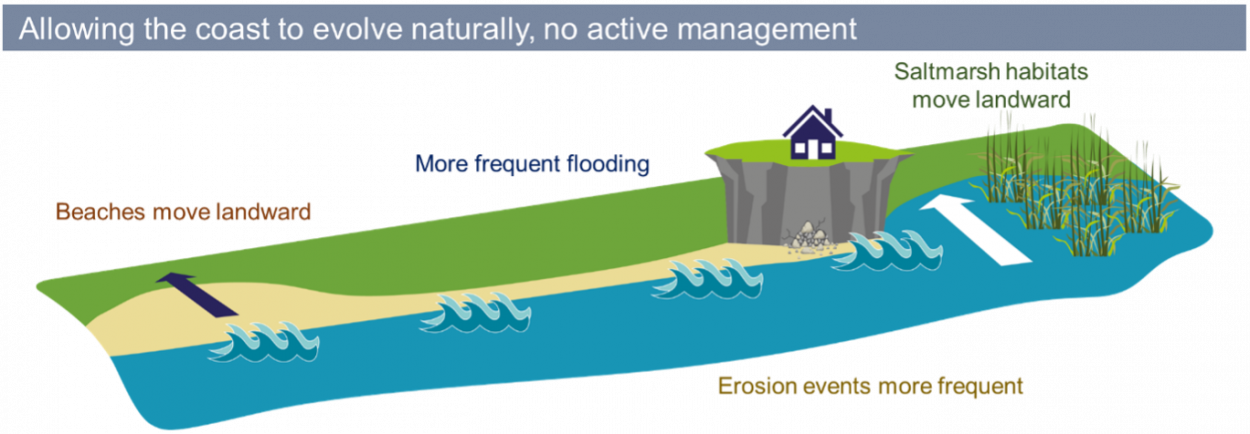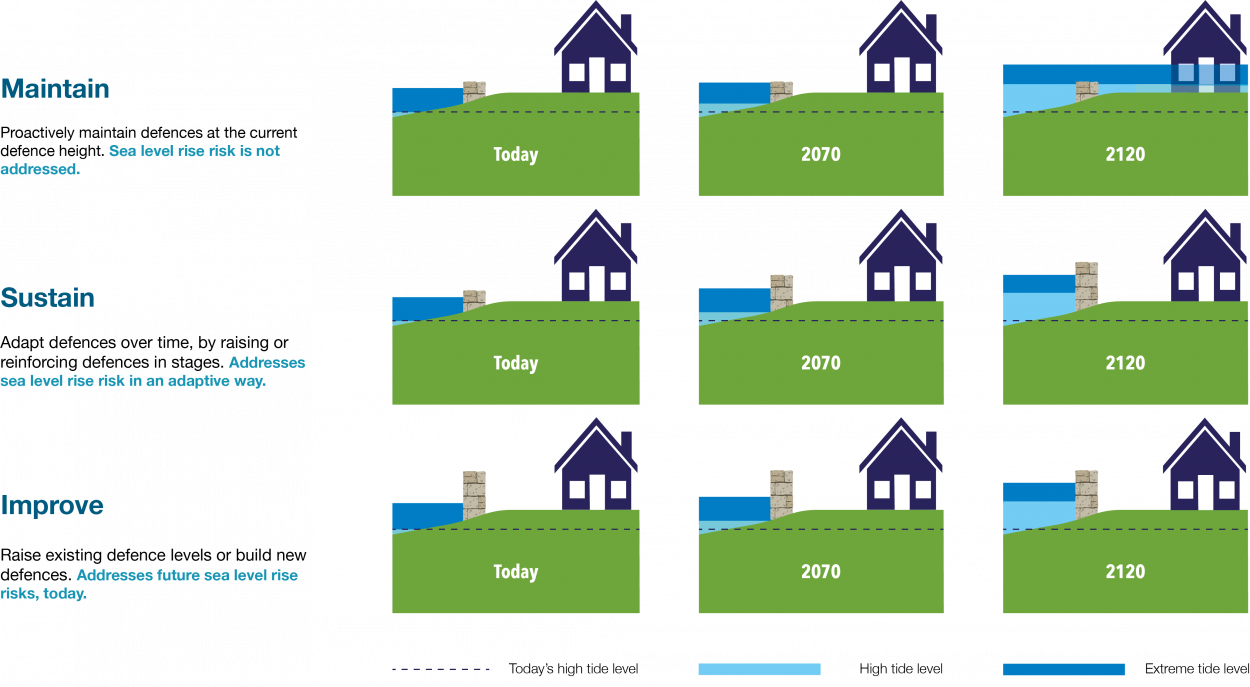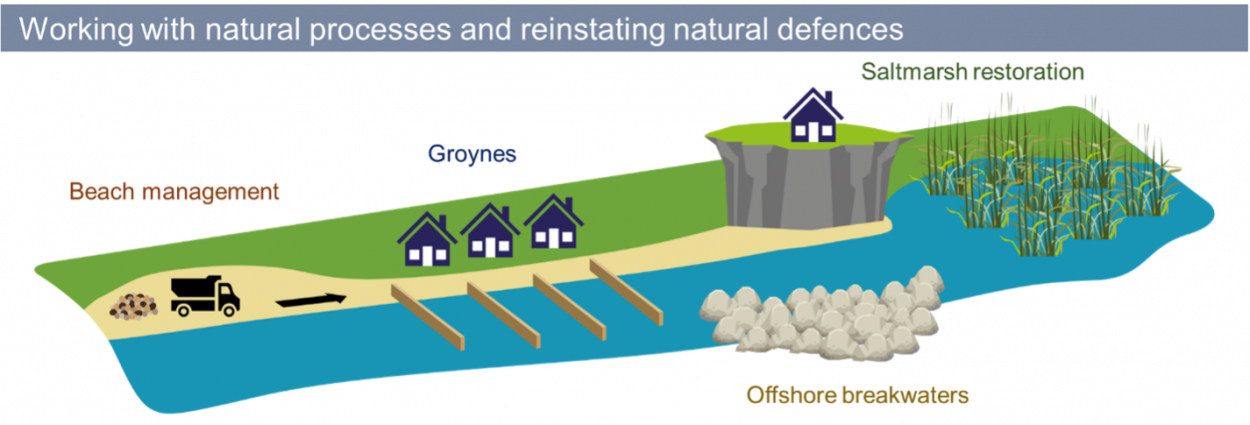Accepting the tide

We have to consider this approach as our baseline.
This approach involves no intervention or management, where the coast is allowed to effectively evolve naturally. Beaches and saltmarsh habitats are able to move landward naturally as sea levels rise, erosion is unconstrained and flooding will become deeper and more frequent over time.
This is not going to be appropriate everywhere, especially in built up areas, we will not just let houses flood, but it is more about accepting the risk of flooding.
Keeping out the tide

This approach involves building artificial structures which try to control natural processes. These often ‘hard’ defences are designed to reduce erosion or hold back the tide.
They cannot protect against every storm eventuality and so do not stop flooding completely, there is always still a risk. They are all also built with a design life and will not be sustainable for ever. Over time and as sea levels rise, beaches will disappear, and natural saltmarsh will reduce as its squeezed against defences (known as coastal squeeze).
There are a lot of different methods, but some seen on Hayling include:
- Seawalls – in front of Inn on the beach, Hayling Billy car park in the north and Mengham Rythe Sailing club.
- Timber or rock revetments – coast guard station and just south of Mengham Rythe Sailing club
- Embankments – locations on both the east and west cost of the island
Under this approach we also consider the level of change in risk over time with different options to find the best solution. We consider options that Maintain, Sustain or Improve the current level of protection:

Working with the tide

By working with natural processes rather than against them, this approach takes a more sustainable and natural approach to managing the coast.
Ways of working with the tide include:
- Beach management – by moving material from areas of accretion to areas of erosion and building up the beach after storms. This needs to be done frequently. We are currently use this method along Hayling’s open coast.
- Beach or dune nourishment – where new material is placed on the beach, or planting to stabilise dunes. We regularly nourish the beach at Eastoke from a boat using dredged material.
- Groynes – to trap sediment and build up a beach. This method can have negative effects by starving other areas of material causing erosion elsewhere. We have rock and timber groynes along Hayling’s open coast.
- Offshore breakwaters – helps trap beach material landward of the breakwater. This method is however, only effective for wave overtopping, not tidal flood inundation.
- Saltmarsh restoration – reinstating a natural defence against flooding and erosion by restoring saltmarsh habitats. This option will appeal more to the harbour coasts.
Adapting to the tide

This approach focuses on managing change, to minimise the negative consequences of flooding and erosion, where we are adapting to a changing environment by making communities more resilient to climate change.
It can involve:
- making space to allow beaches to rollback landward naturally as sea levels rise
- adapting property so it’s more resilient to flooding
- making modifications inside and outside to reduce impacts
- flood warning and flood plans
- relocating property or other assets such as car parks
- changing land uses
This approach also has the potential to provide new opportunities such as creating new habitats where defences are moved back to make space for the tide.




